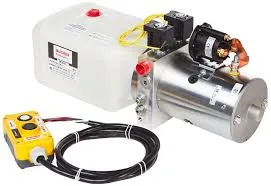Sep . 28, 2024 00:22 Back to list
Hydraulic Cylinder Solutions for Steering Systems and Enhanced Vehicle Control
Understanding Steering Hydraulic Cylinder Products
Hydraulic cylinders are an essential component in various machinery and vehicles, particularly in applications that require controlled movement and significant force. Among these applications, steering hydraulic cylinders play a critical role in enhancing the maneuverability and functionality of vehicles ranging from cars to heavy-duty trucks and agricultural machinery. In this article, we will delve into the fundamentals of steering hydraulic cylinder products, their construction, operation, and applications.
What is a Hydraulic Cylinder?
A hydraulic cylinder is a mechanical actuator that converts hydraulic energy into linear motion. It consists of a cylinder barrel, a piston, and end caps, with hydraulic fluid (commonly oil) flowing in and out to generate movement. Steering hydraulic cylinders are specifically designed to provide the necessary force to turn the steering mechanism of a vehicle with precision and reliability.
Key Components
1. Cylinder Barrel This is the main body of the hydraulic cylinder where the piston resides. It is typically made from high-strength materials to withstand high pressure and is often coated for corrosion resistance.
2. Piston The piston moves within the barrel and is connected to the steering linkage. As hydraulic fluid is forced into the cylinder, it pushes the piston, causing it to move and, thus, steering the vehicle.
3. Seals These are essential for preventing hydraulic fluid leaks. They maintain pressure within the system, ensuring efficient operation.
4. Ports Hydraulic cylinders have inlet and outlet ports that allow hydraulic fluid to enter and exit the cylinder.
How Steering Hydraulic Cylinders Work
The operation of steering hydraulic cylinders is based on Pascal's Law, which states that pressure applied to a confined fluid is transmitted undiminished in all directions. When the driver turns the steering wheel, the steering system directs hydraulic fluid into the steering hydraulic cylinder. This fluid creates pressure that moves the piston inside the cylinder, which in turn turns the wheels of the vehicle in the desired direction.
The efficiency and responsiveness of steering are significantly enhanced with hydraulic cylinders, as they provide the necessary force to move heavy vehicle parts smoothly. This system can considerably reduce the physical effort required by the driver while offering precision steering, especially in larger vehicles.
steering hydraulic cylinder products

Applications of Steering Hydraulic Cylinders
Steering hydraulic cylinders are crucial in various fields
1. Automobiles Most modern vehicles utilize hydraulic power steering systems, which improve maneuverability and reduce driver fatigue.
2. Heavy-Duty Trucks and Buses Steering hydraulic cylinders are vital in large vehicles where maneuverability and steering precision are critical, particularly in urban settings or during tight turns.
3. Agricultural Equipment Tractors and other farming machinery rely heavily on hydraulic steering systems to navigate across fields efficiently.
4. Construction Machinery Equipment like excavators and bulldozers use hydraulic steering cylinders to facilitate precise control during operations.
5. Marine Applications Boats and ships often employ hydraulic steering systems for easier handling, especially in larger vessels where manual steering would be impractical.
Advantages of Hydraulic Steering Systems
One of the most significant advantages of hydraulic steering systems is their ability to provide a smoother and more responsive steering experience. Unlike manual systems that require significant physical force, hydraulic systems reduce the strain on the driver, particularly during extended periods of operation. Additionally, hydraulic systems can be fine-tuned for variable steering ratios, allowing for more responsive handling at different speeds.
Furthermore, the lightweight design and compact nature of hydraulic cylinders allow them to be integrated into various designs without compromising space or weight requirements. Their durability and strength also mean reduced maintenance needs over time, making them a cost-effective choice for many applications.
Conclusion
In summary, steering hydraulic cylinders are indispensable components in modern vehicle design, offering numerous benefits in terms of control, comfort, and efficiency. As technology continues to evolve, the design and manufacture of these cylinders are likely to advance, leading to even greater improvements in performance and reliability. Understanding the mechanics behind these components not only enhances appreciation for automotive engineering but also highlights the importance of hydraulic systems in daily transportation. As we move forward, the role of steering hydraulic cylinders in various industries will only continue to grow, further solidifying their status as a vital element of effective machinery.
-
Fork Lift Power Units - Hebei Shenghan | Efficiency, Reliability
NewsJul.13,2025
-
1.5-Ton Turbocharged Cylinder-Hebei Shenghan|Hydraulic Solution,Energy Efficiency
NewsJul.13,2025
-
Auto Hoist Power Units-Hebei Shenghan|Efficiency&Industrial Lifting
NewsJul.13,2025
-
Double Acting Power Units-Hebei Shenghan|Hydraulic Solutions,Industrial Efficiency
NewsJul.13,2025
-
1.5 Ton Lifting Cylinder 70/82-40-290-535 - High-Performance Hydraulic Solution | Hebei Shenghan
NewsJul.13,2025
-
Fork Lift Power Units - Hebei Shenghan | Efficiency&Reliability
NewsJul.13,2025
